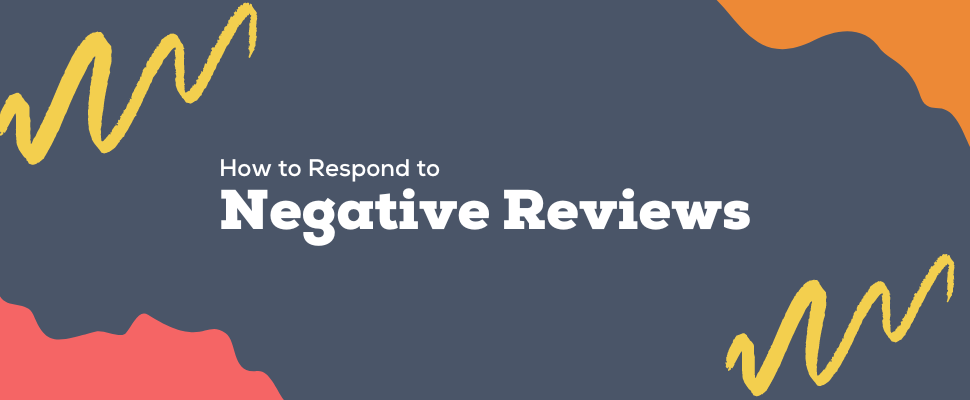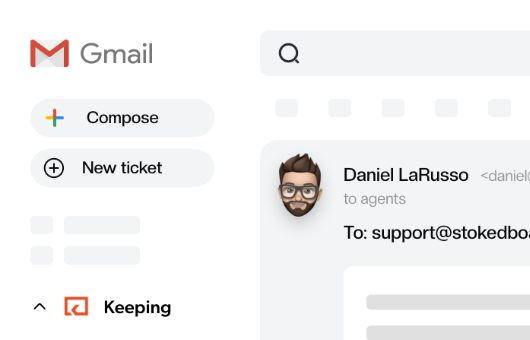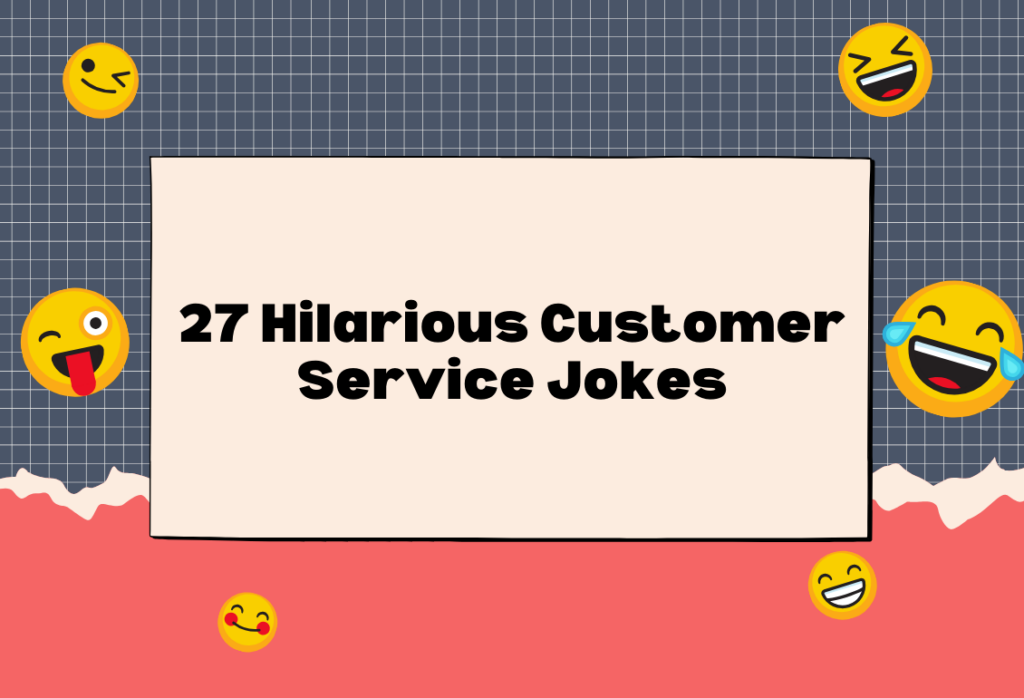
How to Respond to Negative Reviews
When replies to negative reviews are thoughtful, personalized and constructive, customers are much more likely to forgive you for a bad service experience.
Getting a negative review online can feel deeply personal for a business owner. It hurts when a customer had such a bad experience with your business that they felt compelled to share it with others. Negative reviews also have the potential to impact your brand’s reputation, driving away potential customers who have been influenced by the comments.
While it can be tempting to ignore such reviews, this is the wrong approach. Instead, you need to know how to respond to negative reviews.
Believe it or not, there can be a positive side to negative reviews. Companies that have only predominantly positive reviews may seem like they are “cheating”, and customers may become suspicious that the reviews are fake. 95% of customers are suspicious of a rating if there are no negative reviews.
Thoughtful, constructively critical reviews of your business on sites like Facebook, Yelp, TripAdvisor and Google can be beneficial to your company. They can show your business ways you can improve your service, and help you to understand what customers like and dislike about your brand.
Unfortunately, 75% of businesses never reply to their reviews. This is a mistake, as replying to negative reviews can positively impact your company.
The importance of replying to negative reviews
Reviews are important. 95% of customers read reviews before making a purchase, making them an important way for businesses to attract new customers. And for everyone one star increase a business receives on Yelp, results in a 5-9% increase in revenue.
That’s why responding to negative reviews is simply good business practice. When a customer takes the time to leave customer feedback, it’s common politeness to respond promptly and thoughtfully. You can’t stop a customer leaving a negative review, but you can be professional about accepting criticism.
Beyond this, online reviews impact your business’s bottom line. 93% of customers said that online reviews influenced their purchasing decision. Negative reviews could be deterring potential customers, while a well-crafted response may well win you new business. 94% of customers said a negative review persuaded them to avoid a business.
The statistics back this up. One study found that when customers start responding to reviews on TripAdvisor, they receive 12% more reviews and their rating increases by 0.12 stars.
When businesses reply to their negative reviews, they are more able to shape the conversation about their brand. Replying to negative feedback salvages your business’s reputation, while not replying might suggest your business just doesn’t care.
When you respond to a customer’s negative review, they may regret judging your business so harshly. It may make them more open to trying your business again since your company took the time to respond.
Replying to negative reviews online is well-worth the time it takes to write the response.
How to respond to negative reviews
In this section, we’ve got 11 tips to share with you showing you how to respond to negative reviews.
1. Address the reviewer
There’s nothing worse than the boilerplate “dear customer” when crafting a response to a negative review. Online review sites usually provide you with a name for the reviewer so make sure you use it when writing your reply.
Using the reviewer’s name shows that your business isn’t just using a standard templated response, and that they actually care about the identity of their reviewer. Using a reviewer’s name takes your business from a faceless corporate entity to one staffed by real humans who are reading and responding to reviews.
When you make the special effort to use a reviewer’s name, that makes your response that much more personal.
2. Apologize sincerely
A key element of responding to a negative review is to include a heartfelt apology. Even if the experience might not have been your business’s fault, stating clearly that you’re sorry shows that your business is invested in your customers and cares about the experience.
If the problem was your business’s fault, a genuine apology can diffuse some of the tension that the customer has built up towards your brand. Often, when customers complain, they just want the business to acknowledge their mistake.
Offering an apology after a service lapse raises customer satisfaction to 74%.
Here are some ways to apologize:
- “Oh no! We are so sorry that you didn’t enjoy your experience with [company name].”
- “We are truly sorry you felt that [company name] didn’t meet your standards. Please give us the opportunity to make it right.”
- “We are so sorry for the defect in your [product or service]. This is a very rare occurrence and we’d like to offer you a full refund.”
3. Take responsibility
Taking responsibility for the problem means you don’t blame the customer for what happened. You acknowledge your business’s role in the situation while at the same time showing awareness that the problem shouldn’t have happened in the first place.
Businesses don’t mean to get things wrong, but unfortunately mistakes do happen.
Taking responsibility requires being humble. It can be hard to accept negative feedback, but it’s more professional to recover from mistakes with grace and courtesy. Even when customers are behaving unreasonably, your business should take the moral high ground.
Here are some ways your business can take responsibility:
- “We sincerely regret that on this occasion we dropped the ball. We totally accept responsibility and are grateful you took the time to share this feedback.”
- “We’ve looked into the situation that you’ve shared with us and regret to say we did not fulfill the high standard of customer service that we strive for on this occasion.”
- “Unfortunately we did not live up to your expectations during your time with us. Please accept our assurances that this is not typical of our business.”
4. Provide an explanation
It’s possible to provide an explanation for what went wrong without making excuses. There’s an art to explaining the cause of a situation that doesn’t come across as your business trying to shirk responsibility. Having an explanation can appease your customer’s sense of injustice that your business didn’t live up to the standard they were expecting.
For example, an explanation may be required in case the situation does turn out to be a customer’s fault. Your business needs to provide vital context to show why the situation occurred, which will help avoid the same thing happening in the future.
Explanations show your business knows why it messed up and what they can do better next time.
Here are some ways your business can offer an explanation:
- “Thank you for bringing this matter to our attention. We think we know the reason why this situation arose, so please allow me to explain.”
- “We are devastated to hear that you weren’t satisfied with your experience with us. Usually, customers do [X], so we mistakenly thought you wanted [X]. This is on us.”
- “We have looked into the situation you described, and discovered there is a flaw in our [X] process. We are so sorry for the inconvenience this has caused you.”
5. Thank the reviewer
At the end of the day, whether positive or negative, the reviewer has taken the time to leave customer feedback about your business. This deserves a thank you, even if their review contained criticism.
Remember, the only way your business can improve is by listening to genuine negative feedback from unhappy customers. For every customer who complains, there are 26 more who remain silent, so your negative review is just the tip of the iceberg.
So those customers who complain deserve a heartfelt thank you, not only for taking the time to review but also sharing critical insight into your business’s service.
Here are some ways your company can say thank you:
- “We sincerely thank you for taking the time to leave this review, and showing us how the business can do better.”
- “Please accept our heartfelt appreciation for your comments. We have taken your feedback on board and used it to improve how our business operates.”
- “Thank you for bringing this matter to our attention. We’d like to look into it further and see how we can make it right.”
6. Offer to make it right
When a customer leaves a negative review, what they’re really waiting for is to see how your company is going to fix the problem. Apologizing is good, but it’s better to go one step further and show your customer how you are going to make it right.
Making it right involves showing explicit awareness that you understand what the customer’s problem was, and communicating any changes you are going to make as a result of their feedback. If companies make changes as a result of feedback, this shows that they are open to constructive criticism. It’s also the professional thing to do.
The best companies are always improving, and never think that the current state of affairs is “good enough”.
Here are some ways your company can make it right:
- “Thank you for your comments. We have passed them on to our product manager who will be implementing changes as a result.”
- “We are sorry the service didn’t meet your expectations. We have informed our customer service manager who is going to ensure this never happens again.”
- “Your comments have been very helpful. We’ve used them to improve our service so hopefully we can welcome you back again.”
7. Provide an alternative way to get in touch
Hopefully, your negative review is just the beginning of the conversation. In order to truly get to the root cause of the problem, you need to ask the customer to move to a more private platform such as phone or email so you can elicit more detailed feedback. While it’s important to initially respond publicly, it’s more professional to discuss the matter in private.
The best option is to provide the customer with the personal phone number or email address of one of your customer service representatives so they can attend to the matter directly. Customers will feel better talking to a real human such as a customer service rep who can help them resolve their problem.
It must be easier for customers to provide further feedback rather than remain silent.
Here are some ways your company can provide further details:
- “Sincerest thank you for your feedback. We’d like to look into this issue more deeply and see if we can get it resolved. Please call [name] on [phone number] or email [email address] so we can get the ball rolling.
- “Sorry to hear that you didn’t have a good experience with [company name]. In order to understand why, could you contact us on [phone number] or [email address] so we can discuss the matter in more detail.”
8. Respond quickly
53% of customers expect businesses to reply to their online reviews within seven days. Your reply becomes almost meaningless if you take weeks or even months to reply. By that time, the customer has stopped caring and your chance to rectify the situation has disappeared.
Most review sites show the date that the online review was posted, so it’ll be easy for other potential customers to see how long it takes your business to reply. Even though you probably have a million and one other things to do, try to make replying to negative reviews a priority. A thoughtful response needs only take five minutes out of your day.
Remember, responding to negative reviews is a big part of damage control. You should take the opportunity to salvage your business’s online reputation rather than letting a negative review sit online unanswered.
9. Don’t take it personally
Negative online reviews can really hurt, and feel like a personal attack – especially for small business owners who pour their heart and soul into customer service. At the end of the day, customers are generally venting their frustration with the business rather than against any one particular person.
And if you can avoid taking negative feedback personally, your business looks like the bigger person, which potential customers will definitely appreciate. So when reading a negative review, take time away from your keyboard to allow you to craft a more objective response. Avoid responding to your customer in kind, even if you feel like they deserve it.
Ultimately, your business is likely to receive far more positive reviews than negative ones, so keep things in perspective.
10. Offer a refund or discount
Sometimes, when a customer has had a bad experience, it can be appropriate to offer them a refund or discount to make up for it. Some companies worry that this tactic encourages more customers to complain in order to get free stuff, but we like to think that most customers are genuine.
Offering a refund or discount shows the customer that your business is genuinely sorry and accepts the standard of service wasn’t what was promised. Giving customers something extra appeases upset customers and encourages them to return to your business again.
You must give customers something of equal value to what customers feel they have lost through their negative experience with your business. If the product was defective, give them a full refund. If they didn’t enjoy their meal, offer them a complimentary meal next time they dine with you.
If a customer wasn’t satisfied, offering a refund or a discount is the decent thing to do.
11. Ask for a second chance
A negative review doesn’t have to be the end of the road with a customer. Through the tips we’ve outlined above, you can win unhappy customers back through responding effectively to their complaints.
Emphasize that your business will be happy to receive them back at any time and would love the chance to earn a more positive review. When customers see that a real person is responding to the review, this often makes them feel more sympathetic to the business.
As we mentioned before, plenty of customers dislike your business but never complain about their negative experience. Negative feedback is an opportunity for you to win these customers round and earn their repeat business. When customers give your business a second chance, this may well lead to more positive reviews next time.
And if customers don’t take you up on the offer, don’t get discouraged. You still look magnanimous to other potential customers.
Here are some things you can say to ask for a second chance:
- “Sorry this experience didn’t live up to your expectations! We’d love a chance to welcome you back to improve your opinion of us.”
- “Next time you’re at [company name], ask for me personally. I’d love to ensure you have a much better experience with us.”
- “We’re devastated that you didn’t have a good time shopping with us. Please allow us another chance to earn back your loyalty.”
Hopefully now your business will understand how to respond to negative reviews, which should lead to happier customers.
How to respond to a bad review on Google
Google reviews show up when a person searches on Google and in Google Maps. In order to respond to a negative review on Google, you must be logged into your Google My Business account. Reviews live under the Reviews tab.
To respond to a negative review, click Reply. You’ll be given the chance to edit your review after posting if you notice you’ve made a mistake. Reviewers are notified when you post a reply to their review with email notifications.
How to respond to a bad review on Yelp
You can respond to your bad reviews on Yelp by logging into your Yelp for Business Owners page. Companies wishing to do so should already have claimed their business page on Yelp.
Reviews can be found under the Reviews tab in Yelp for Business Owners. You can respond to your Yelp reviews either with a public comment or a private message. There is also the option to thank reviewers for leaving a review.
How to respond to a negative review on Facebook
Business pages on Facebook automatically have the reviews option enabled. Reviews from customers appear as a post in the Reviews or Recommendations section, and all are public when anyone visits your Facebook page.
You can simply respond to negative reviews with a comment on the original post.
How to respond to a 1-star review without comments
What should you say to a customer who gives your business one star and doesn’t leave any comments? First and foremost, invite them to contact you to elaborate on the situation. If possible, send them a direct message to find out what could have led to such a bad experience.
It’s not really possible to respond effectively to a review if there are no comments to address. That’s why it’s so critical to ask your customer to expand upon their one-star rating. Unfortunately, low reviews drag down your whole rating so you’ll want to address these promptly.
Wrapping up
Your most unhappy customers are your greatest source of learning. Although it can be annoying at times for the business owner, take your negative reviews as an opportunity to do better. Responding to negative reviews is the best way to salvage your business’s online reputation and show your customers that you care, and may well earn you more positive reviews in the future.
Leaving reviews hanging is a surefire way to deter potential customers from ever trying your business in the first place.
When replies to negative reviews are thoughtful, personalized and constructive, customers are much more likely to forgive you for a bad service experience. This leads to more excellent customer service in the long-run. Not only that, but it shows other prospective customers that your business is willing to make it right.
Join 150+ teams that are sharing inboxes with us
The easiest way to upgrade your shared Gmail account. There’s no credit card is required.






